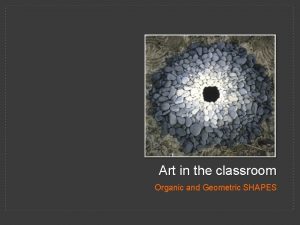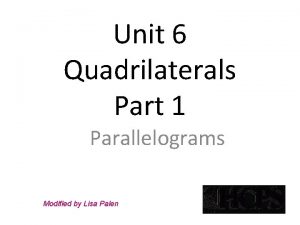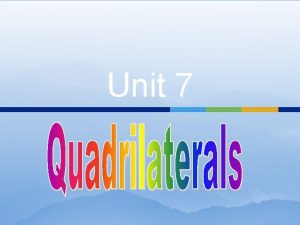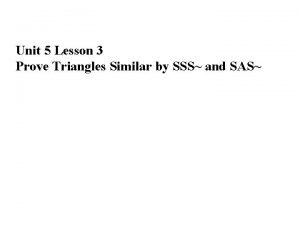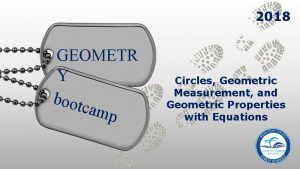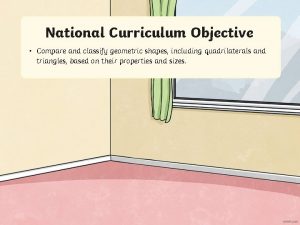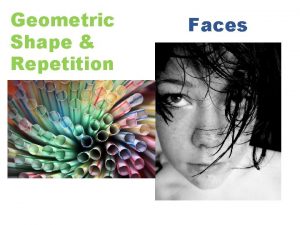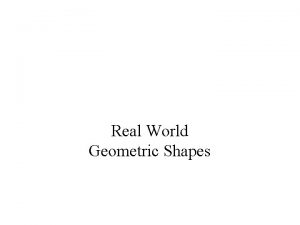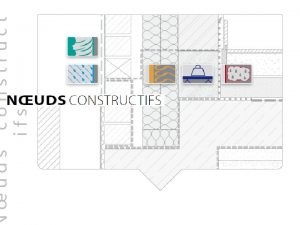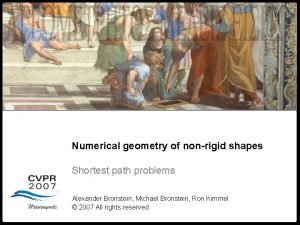Unit Five Geometry Lesson Three Construct Geometric Shapes








- Slides: 8

Unit Five: Geometry Lesson Three: Construct Geometric Shapes 7 th Grade CCCPS February 2013

Constructing Triangles One way to construct triangles is to use computer technology. Another way is to draw it by hand using a ruler, protractor, or both. If you draw it by hand you will be given certain conditions. You can determine if it is possible to draw one unique triangle, more than one triangle (ambiguously defined), or no triangle at all.

Constructing Triangles To determine if triangles are possible, use your two theorems: Triangle inequality theorem: the sum of the lengths of any two sides of a triangle must be greater than the length of the third side. You can only use this theorem if you are given side lengths. Triangle sum theorem: the sum of the angles in ANY triangle is 180° You can only use this theorem if you are given angle measures

Is it possible? Not possible: If it doesn’t pass either of the two theorems Unique: if you are given three side lengths and they pass theorem, this triangle can only be drawn once. (If you change the side lengths, its not the same triangle!) Ambiguously defined: if you are given three angle measures and they pass theorem, this triangle can be drawn an infinite number of times, just with different side lengths (similar triangles)

Example A B F G E 54˚ C Note: These two triangles have the same angle measures and pass the angle sum theorem, but are different sizes. So, given these angle measures, you can draw an infinite number of triangles that are SIMILAR!

Unique Right triangles Remember: a right triangle must have one right angle. The side lengths of a right triangle have a special relationship based on the Pythagorean theorem (more about this in 8 th grade). For a triangle to be a right triangle, its side lengths will be in triples. There are multiple triples, but the common ones are listed below 3, 4, 5 (Or any multiple of these numbers) 5, 12, 13 (Or any multiple of these numbers)

Examples Describe the following triangles as ambiguously defined, nonexistent, a unique acute triangle, a unique right triangle, or a unique obtuse triangle 1. A triangle with angles measuring 35°, 85°, and 60°? 2. A triangle with side lengths of 2 inches, 2 inches, and 1 inch 3. A triangle with side lengths of 6 cm, 8 cm, and 10 cm 4. A triangle with angles measuring 45°, 90°, and 50°

Examples 1. If Mr. Jordan wants to construct a triangle with angles measuring 67° and 42°, what would have to be the measure of the third angle in his construction? 2. If Mrs. Lashley constructs a triangle with angles 44°, 23°, and 113°. If she tries to construct a different triangle with those angle measures, what will she discover? 3. Mrs. Radcliff constructs a triangle with one side 6 cm and another side 9 cm long. Which is not a possible length for her third side? a. 10 cm b. 2 cm c. 7 cm d. 8 cm
 These are shapes that seem to follow no rules.
These are shapes that seem to follow no rules. Unit 6 quadrilaterals
Unit 6 quadrilaterals State the name of a regular polygon of 4 sides
State the name of a regular polygon of 4 sides Lesson 3 proving triangles similar
Lesson 3 proving triangles similar Geometry chapter 1 points lines and planes
Geometry chapter 1 points lines and planes 2018 geometry bootcamp answers
2018 geometry bootcamp answers Compare and classify geometric shapes
Compare and classify geometric shapes Geometric shapes video
Geometric shapes video Geometric and organic is to shapes as andy warhol is to
Geometric and organic is to shapes as andy warhol is to
